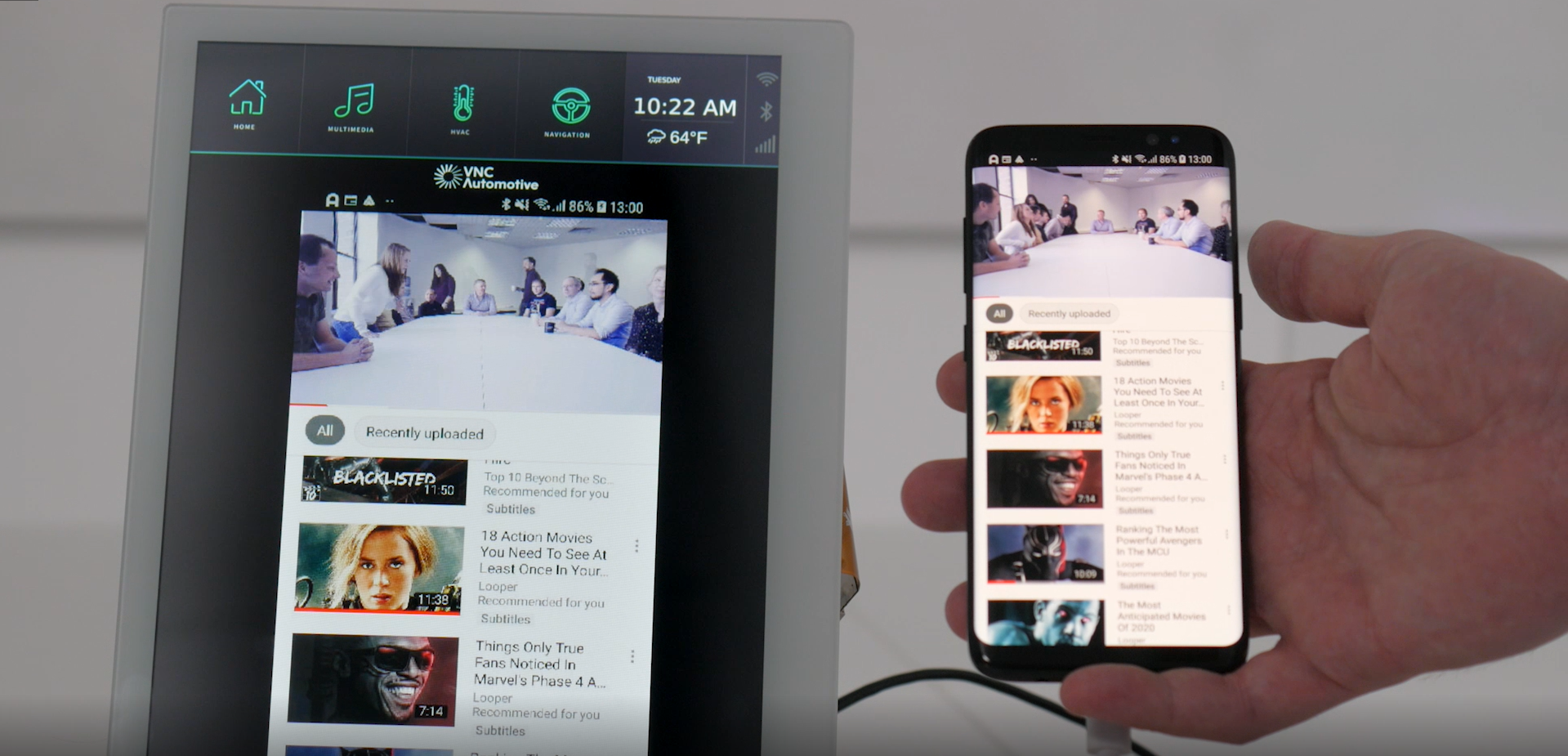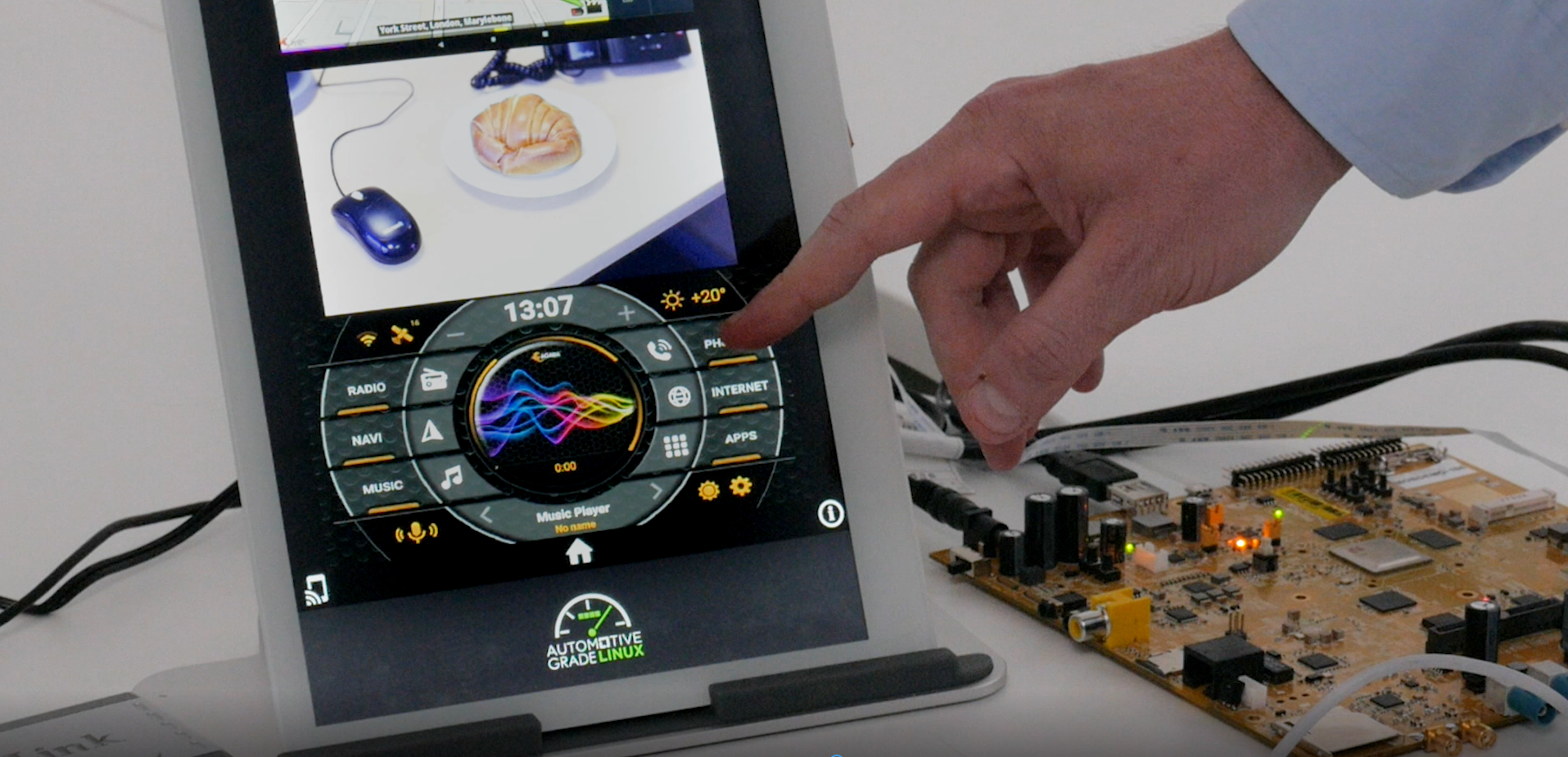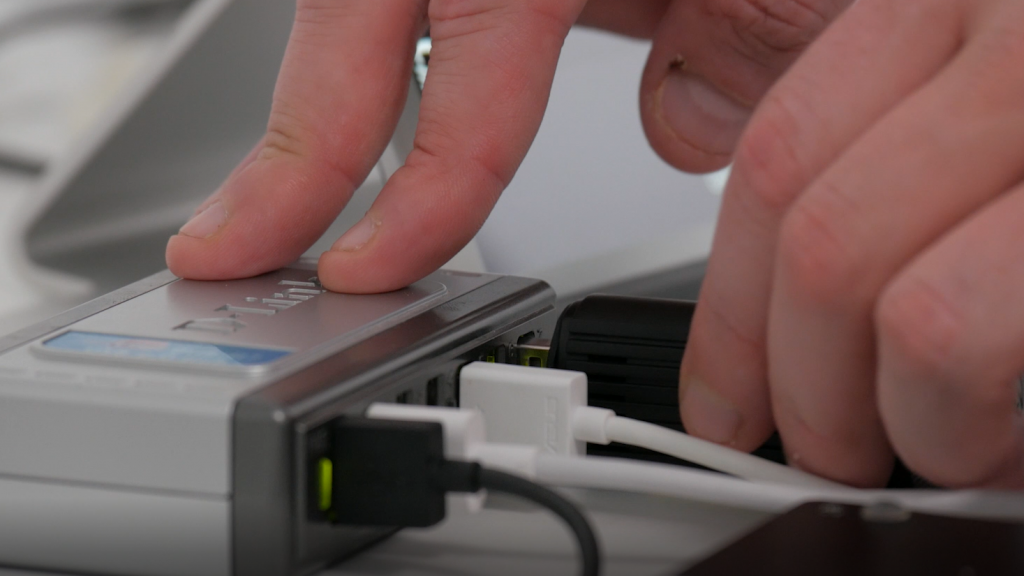By:
VNC Automotive
Date:
21st November 2019
In-vehicle entertainment is a major battleground in which auto OEMs are striving to differentiate the consumer experience. There are various approaches to achieving a unified and rich entertainment environment within the car, and this blog looks at the increasingly popular modular approach. This post is based on our Head of Pre-Sales, Agustin’s, talk at the recent Automotive Linux Summit, with excerpts below and the full recording available here.
The constraint with traditional in-vehicle infotainment
IVI had to evolve beyond basic audio capabilities. These days it’s no longer unusual to see cars with two screens: one on the dash and one behind the steering wheel. The problem is that each screen has a different purpose, so the different requirements necessitate dedicated hardware and operating systems. To get around this, a recent trend is to combine them into a single system, with a hypervisor to run multiple operating systems. For example, Android for the IVI system and a native real-time system for safety-critical systems. This, however, is expensive, tricky to integrate and difficult to update, which limits the ability to create functionally rich user experiences beyond basic audio and navigation capabilities.
“With this current generation of infotainment systems, we see them being very limited in terms of the functionality.”

Agustin Almansi, Head of Pre-Sales, VNC Automotive says:
“For many years, customers have been frustrated by the state of the art of the IVI systems and have been looking at ways of bringing the experiences that they have on their personal devices into the car.”
The dawn of smartphone integration
The arrival of MirrorLink in 2011 made it possible for consumers to project their smartphone apps to the IVI system, so they could be used in a safe way during driving. Apple and Google quickly saw the value in bringing mobile apps to IVI systems and launched their own standards and platforms: Apple CarPlay and Android Auto.
This was a plus for consumers. Not only was the user experience familiar, but they could use their favourite audio apps and navigation software in the car too, which was much better, much more up to date and already personalised with location bookmarks compared to the native software built into the car system. This brought the rich ecosystem of mobile applications to the car dashboard.
But what’s good for consumers isn’t always good for OEMs.
A familiar app environment for the consumer means a loss of differentiation for manufacturers. They lose the opportunity to develop and brand their own IVI platforms. In a brand-conscious world, that’s a huge disadvantage. On top of that, adding and certifying smartphone technologies for use in an IVI system is incredibly expensive and resource-intensive.
“The advantage that the user has of having the same experience across any car is actually a disadvantage for the OEM because if you’re someone like Daimler, you don’t want your HMI and your user experience to be the same as a competitor’s car. You want to really differentiate yourself.”
Most importantly of all, OEMs lose control over the IVI system. With mobile companies developing the standards, manufacturers can no longer drive the future of IVI or even guarantee a vehicle’s ongoing compatibility with future mobile devices. Even with Google’s updated platform, which is native to the IVI system and gives OEMs a certain amount of leeway in terms of branding, there’s a huge loss of control to an external company in terms of the way the entire IVI system behaves.

The rise of modular architecture – and its possibilities
What if applications running on different devices and operating systems could work together in one central and flexible ecosystem that keeps the OEM in full control? That’s the idea behind modular architecture, and it’s a sea change in the way OEMs are approaching IVI design.
“The idea is that instead of running all the applications in the IVI system, which was the traditional way, or running all the applications in the smartphones, which is the smartphone integration approach, the applications can be distributed across different devices. Those devices can be running different operating systems and can be connected to each other in different ways. There is no limiting factor here.”
With this modular approach, it becomes easy to blend different content from different sources. You can have a smartphone providing navigation software together with custom accessories that are native to your brand and only available to your customers. It also opens up richer experiences inside the car, as the IVI system can be connected to rear passenger screens and consumer devices.
“Being able to distribute audio and video content across different devices inside the car will become a very important use case, especially as the cars become more autonomous.”
The driver and passengers will even be able to connect seamlessly to business apps or smart home devices. In this regard, the vehicle becomes not just a mode of transport, but a hub for entertainment, productivity and interactivity.

Modular architecture is future proof
You never know what’s coming. Ten years ago, consumers were only just getting to grips with the iPhone. Tech is moving quicker and changing our world faster than ever before. Different products, different platforms, different ways of connecting. Who knows what the IVI landscape will look like in ten years?
The key point here is that a modular architecture allows you to customise and expand the features by simply introducing new applications and devices. And with secure over-the-air updates, OEMs can ensure their entire product range keeps pace with innovation – whether that’s a brand-new vehicle or one that rolled off the forecourt five years ago.
Modular IVI architecture puts auto OEMs in a position of flexibility, where they can be reactive to the latest trends while staying on the front foot and helping to drive the future of IVI systems. You can watch Agustin’s webinar here.
You may also be interested in:
>> Video: A modular approach to automotive IVI
>> Why OEMs need a modular approach to IVI systems for top customer experiences
>> Keeping the family entertained with in-vehicle connectivity

Agustin
21st November 2019
